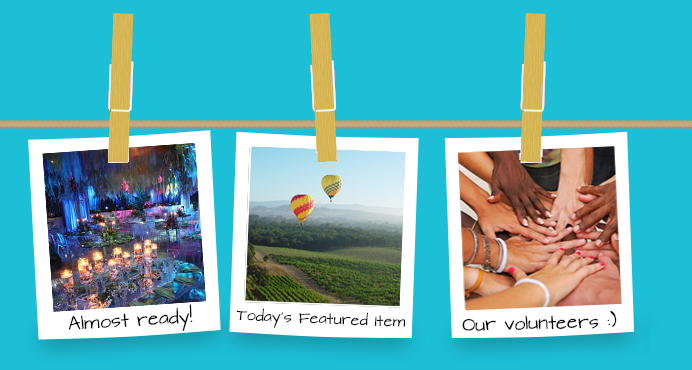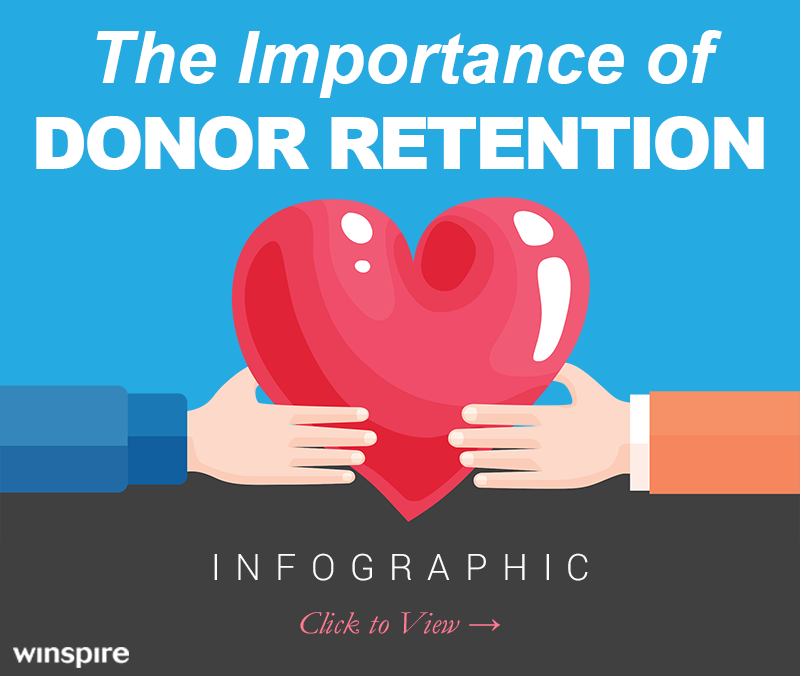In the business world, you may have heard that attracting new talent costs much more than retaining employees. Did you know the same principle is true for donors?
A recent study by the Association of Fundraising Professional’s Fundraising Effectiveness Project concluded donor retention reached a 9-year low of 46 percent in 2016 – despite an increase in revenue and donors overall.
What does this mean for your organization? If you have 1,000 donors and a 46 percent retention rate, in one year 460 of those donors will return. In two years, 212 will return.
In five years, just 21 of the original 1,000 donors will still be supporting your organization.
Indeed, improving retention rates by just 10 percent can translate to tens of thousands of dollars for your cause over time. What’s more, recurring donors have been shown to give 42 percent more annually than new donors – meaning nonprofits are being forced to acquire many times more new donors to make up for the missing 54 percent in annual revenue.
It’s time to fundraise smarter.
Check out today’s full infographic detailing the state of donor retention today, then download free resources to sharpen up key areas of your donor retention strategy.
As mentioned, acquiring new donors takes a huge amount of time and money. While it’s still critical to attract new donors to your cause, many nonprofits can benefit from taking a closer look at development strategies designed specifically to retain current donors.
Here’s just a few resources to help you execute the tips listed above.
In-Person Events
As experts in charity auction fundraising, we talk a lot about events!
Fun, surprising and mission-minded annual events keep even peripheral donors engaged with your organization.
If you hold an annual charity auction, one easy way to do this is offering big-ticket travel packages. Not only does a trip to Napa Valley, for example, appeal to just about everybody and help you sell more tickets to your event – surveys show 83 percent of winning bidders budget $5,000 or more for travel each year.
Imagine if your nonprofit could redirect some of that travel budget, replenished annually, to your cause.
Once supporters start planning to purchase their summer vacation and support your cause at the annual fall gala, they have become a returning donor.
{{cta(‘0d771a74-45f8-4fa7-800e-0e6d53ecee96′,’justifycenter’)}}
In addition to fundraising events, consider creating opportunities for supporters to interact with your organization face to face. A luncheon, networking event or even just a walkthrough of the building creates a memory for the donor that will last far longer than reading through a newsletter.
{{cta(‘d8bf0afe-1144-4578-892f-b77968086331′,’justifycenter’)}}
Recruit More Volunteers

One of your most likely groups of supporters to become recurring givers: volunteers.
Volunteers provide the hands-on manpower needed to keep most organizations running. Plus, the experience gives supporters a firsthand look at your work and impact, creating a lifelong positve memory.
If you don’t already have an organized system in place to recruit and oversee volunteers, summer is the perfect time to get started. For more, see…
{{cta(‘cc40c2cc-626b-4a19-9b1c-156531d44796′,’justifycenter’)}}
Social Media + Share Updates
Avoid the temptation of limiting communication with donors only to fundraising campaigns or when there’s an “ask” involved.
Fact is, when donors are emotionally moved, they will be inspired to give on their own.
For example, if you had a year-end giving campaign, now’s a good time to update supporters with progress. Remind them that their generosity is making this impact possible.
 In addition to the traditional email newsletter, try communicating with supporters more regularly on social media and encouraging two-way conversation. Updates, polls and conversation starters can easily be shared, along with photos and videos. You might thank major donors after a giving campaign, share images of your volunteers hard at work, or just post an inspirational quote that connects to your cause.
In addition to the traditional email newsletter, try communicating with supporters more regularly on social media and encouraging two-way conversation. Updates, polls and conversation starters can easily be shared, along with photos and videos. You might thank major donors after a giving campaign, share images of your volunteers hard at work, or just post an inspirational quote that connects to your cause.
(For ideas, connect with Winspire on Pinterest and Instagram!)
Having a positive, unique social media “personality” sets you apart from other nonprofits and will keep donors engaged for years to come.
{{cta(’55cbcb9e-f865-47b8-bc59-49f07a4b0037′,’justifycenter’)}}
Customized Communication
 Communication tailored to your donors is key to connecting them personally with your cause. However, that doesn’t mean you need to spend hours writing unique emails to every donor.
Communication tailored to your donors is key to connecting them personally with your cause. However, that doesn’t mean you need to spend hours writing unique emails to every donor.
For the next email newsletter, try segmenting your list based on important characteristics. For example, donors that have been giving 6 months or less may receive a more introductory email with an overview of your programs, while long-term and recurring donors can receive updates tailored to their level of giving. Donors that live nearby may be interested in volunteering opportunities or touring the building, while out of state supporters can be targeted with a giving campaign.
The more you can tweak messaging to the reader, the more likely they are to stay engaged.
{{cta(‘0d350941-6089-4be9-9c57-ec4ab09838a8′,’justifycenter’)}}
Also smart: Ask donors for the areas of impact that interest them most (i.e. “How did you hear about us? For what programs would you like to receive updates?”) when signing up for your email list.
For a complete guide on strategic nonprofit email marketing, check out the free eBook below. It’s focused on email campaigns for fundraising events but can be applied to emails year-round (like tips for segmentation, choosing the right email provider, and the best time to send).
{{cta(‘661274c0-1d2e-4806-a547-596f67dbe59d’,’justifycenter’)}}


